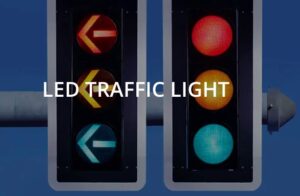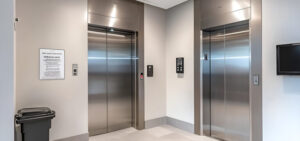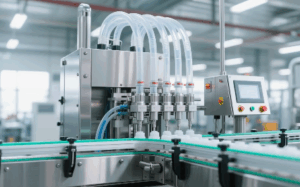Traffic control is a foundational aspect of modern infrastructure, yet many people rarely consider the components that keep it running smoothly—especially the humble traffic signal. In recent years, municipalities worldwide have accelerated the replacement of traditional incandescent bulbs with LED traffic signal lights. This isn’t a minor upgrade; it’s a transformation driven by measurable improvements in efficiency, safety, and long-term value.
Below, we break down why LED traffic signal lights are rapidly becoming the standard and how they outperform their traditional counterparts in every meaningful category.
Table of Contents
ToggleEnergy Efficiency: LEDs Use Less Power for Better Performance
Drastic Reduction in Power Consumption
One of the most compelling reasons cities are turning to LED traffic signal lights is their superior energy efficiency. A single incandescent traffic signal bulb typically consumes between 60W and 150W, depending on color and brightness. In contrast, a high-quality LED signal light performs the same function using only 10W to 25W.
For a single intersection with 12 signal heads (three colors per direction, four directions), the power savings are substantial:
| Light Type | Power per Unit | Annual Use (kWh, per intersection) | Estimated Cost (@$0.12/kWh) |
| Incandescent | 100W | ~5,300 kWh | ~$636 |
| LED Traffic Light | 15W | ~800 kWh | ~$96 |
Savings per intersection annually: ~$540
This translates to tens of thousands of dollars in savings across even a mid-sized city, making LED retrofits a cost-cutting priority for urban planners and public works departments.
Maintenance and Longevity: Less Labor, Fewer Interruptions
Extended Lifespan Reduces Replacement Needs
Incandescent bulbs typically last 8,000 to 10,000 hours, meaning they often need to be replaced every year. Conversely, an LED traffic signal light can operate for 50,000 to 100,000 hours—often lasting up to 10 years under normal use.
Reduced Labor and Maintenance Costs
Replacing traditional bulbs isn’t just about cost of the bulb—it also involves:
- Deploying lift trucks and personnel
- Disrupting traffic
- Implementing safety procedures
LEDs reduce these issues dramatically. According to the U.S. Department of Energy, cities that made the switch saw a 60–80% drop in maintenance costs.
Case in point: The City of Boston reported saving over $400,000 annually after converting all traffic signals to LEDs—half from electricity and half from reduced maintenance.
Visibility and Safety: LEDs Are Easier to See and React To
Brighter and More Consistent Illumination
Unlike incandescent bulbs, which emit light in all directions and require reflectors to focus the beam, LED traffic signal lights are inherently directional. This design makes the signal:
- Easier to see in direct sunlight
- More vibrant in fog, rain, or snow
- Uniform in color and intensity over time
Faster Illumination Time
LEDs light up in microseconds, while incandescent filaments need up to 0.2 seconds to glow fully. That slight delay may seem negligible, but in high-speed traffic conditions or emergency stops, it can affect driver response time.
| Feature | Incandescent Bulb | LED Traffic Signal Light |
| Visibility in daylight | Moderate | High |
| Warm-up time | 0.2 seconds | Instant |
| Color consistency | Fades over time | Stable |
This improved visual performance enhances road safety, particularly in dense urban intersections where milliseconds matter.
Environmental Impact: Sustainability That Pays Off
Lower Carbon Footprint
Because they use up to 90% less energy, LED traffic signal lights significantly reduce the carbon emissions associated with city infrastructure. A typical intersection running on incandescent bulbs emits approximately 3 metric tons of CO₂ annually, whereas LEDs bring this figure down to less than 0.5 tons.
Multiply that across a city with 500 intersections, and you get an annual CO₂ reduction of over 1,250 tons—equivalent to planting 32,000 trees.
Waste and Hazardous Material
LEDs are:
- Free of mercury, unlike some other light sources
- Longer-lasting, meaning fewer units go to landfills
- Easier to recycle due to modular designs
For cities with climate action plans or sustainability targets, switching to LED is not just a technical decision—it’s a public commitment to environmental responsibility.
Total Cost of Ownership: A Clear Winner
While LED signals are more expensive up front—costing between $80 and $120 per signal head versus $20 to $30 for incandescent—this cost is quickly offset by lower operational expenses.
10-Year Cost Comparison per Intersection
| Expense Category | Incandescent | LED Traffic Signal Light |
| Initial Equipment | ~$400 | ~$1,200 |
| 10-Year Energy Cost | ~$6,360 | ~$960 |
| Maintenance Labor | ~$4,000 | ~$500 |
| Total (10 years) | ~$10,760 | ~$2,660 |
Net Savings: Over $8,000 per intersection in a decade
Even conservative estimates suggest cities can recover their LED investments in under 2 years, after which they enjoy years of uninterrupted savings.
Regulatory Standards and Industry Trends
Many countries and cities are no longer treating LED adoption as optional. Agencies such as the Institute of Transportation Engineers (ITE) in the U.S. and the European Committee for Standardization (CEN) have already incorporated LED specifications into their traffic signal regulations.
Utility providers and federal energy agencies are also providing rebates or funding to accelerate the LED transition. This aligns with global energy-efficiency goals and creates economic incentives for early adoption.
Key Takeaways: Why LED Traffic Signal Lights Are Here to Stay
- Energy-efficient: Up to 90% less electricity usage
- Longer lifespan: 5–10x longer than incandescent
- Lower maintenance: Reduced downtime, fewer labor costs
- Brighter and faster: Improved visibility and driver response
- Environmentally safer: Less waste, fewer emissions
- Cost-effective: ROI typically within 24 months
The data speaks for itself: LED traffic signal lights are not just a better alternative—they’re a necessary evolution in urban infrastructure. As energy prices rise and cities face mounting pressure to be more efficient and sustainable, LED adoption is a smart move that aligns both financially and ethically with modern municipal goals.
For contractors, procurement managers, or municipal planners evaluating lighting upgrades, LED is no longer just an option—it’s the new standard.
0




